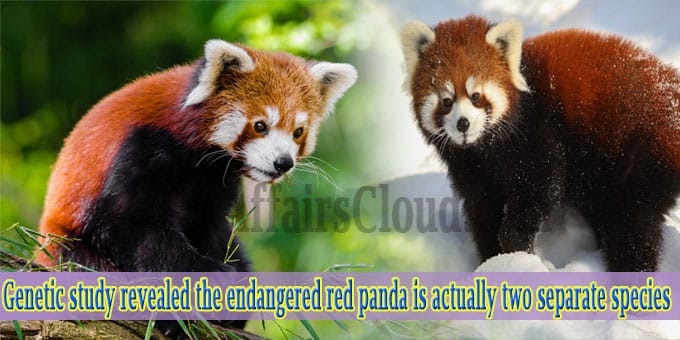On February 29, 2020 According to the genetic study on the endangered species of mammals revealed that Red pandas, the bushy-tailed and russet-furred bamboo munchers that exist in Asian high forests, are actually 2 separate species. Earlier both the Chinese red pandas & the Himalayan red pandas were together considered as red panda species. Key Points:
Key Points:
i.Scientists found the differences between the 2 species- Chinese red pandas and Himalayan red pandas based on 3 genetic markers in an analysis of DNA (Deoxyribonucleic Acid).
ii.Chinese red pandas: Chinese red pandas are found in northern Myanmar as well as southeastern Tibet, Sichuan and Yunnan provinces in China.
iii.Himalayan red pandas: Himalayan red pandas are native to Nepal, India, Bhutan and southern Tibet in China.
iv.International experts have estimated a total population of roughly 10,000 red pandas in the wild.
v.The difference between 2 species based on coloration and skull shape are: Himalayan red panda has more white on the face, while the face coat colour of the Chinese red panda is redder with less white on it.
vi.The tail rings of the Chinese red panda differs from that of the Himalayan red panda, with the dark rings being more dark red & the pale rings being more whitish.
vii.Red pandas are bigger than a domestic cat, which have thick fur, a short snout and pointed ears, spending much of their life in trees & dining mostly on bamboo.
viii.Threats to red pandas: Major threats include deforestation & degradation of their habitat due to human development.
ix.Red pandas and giant pandas are not closely related species, Giant pandas are one of the world’s eight bear species whereas Red pandas has no close living relatives and are called as living fossils as the only remaining member of the Ailuridae mammalian family and closely related to the group that includes weasels, raccoons & skunks.




